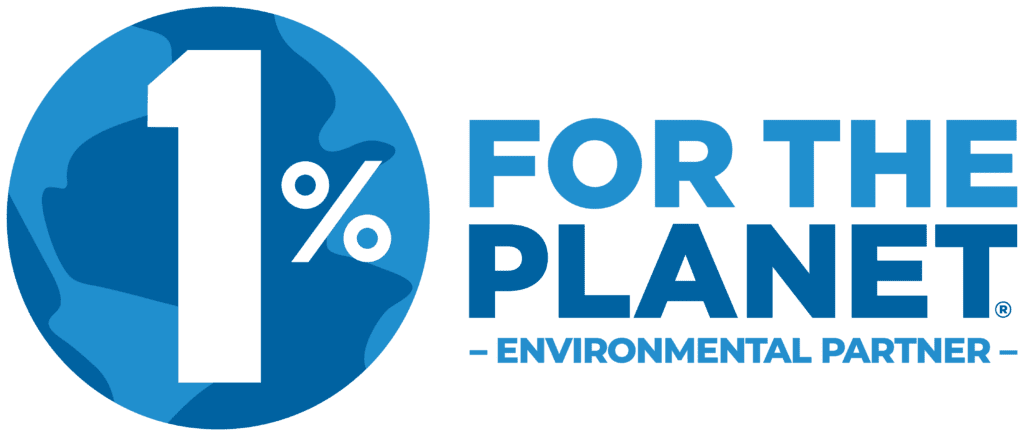On August 18, 2020, the CZU Lightning Complex Fire swept through 97% of Big Basin State Park’s property, destroying almost all of the park buildings and facilities. This marked a new chapter – one that California State Parks, Parks California and local partners see as an opportunity to reimagine the future of this state park.
Before the fire, Big Basin experienced high levels of visitation that overtaxed the park’s infrastructure, and led to vehicle congestion, along with the creation of additional parking areas in sensitive old growth redwood forest areas. As the ancient trees and wildlife inside Big Basin recover and as the park begins to reopen to visitors, this coalition of partners is asking, “how can this special and historic place meet a diverse range of visitor needs sustainably?”
The answer? Data and information are needed to help rebuild Big Basin as a more climate-resilient and welcoming space that can thrive for generations.
That is where Donovan Belardes and Conner Wanless come in. Two students from West Valley College’s Park Management program served as project interns at Big Basin Redwoods State Park last summer. Together, they spent three months conducting an extensive study of park visitors to understand how people use the park, using a variety of methods. They collected close to 700 visitor surveys, of which 630 were in-person. Donovan and Conner also handed out postcards with a QR code to folks who arrived on bicycles and the bus so they could complete their survey at home. They used automated sensors to get a count of how many people were using popular trails. Additionally, they collected data on how many people used the public bus, and how long people stayed at the park by chalking car tires.
This data collection, called a visitor use management study, is part of a larger effort led by Parks California to help California’s state parks be more prepared to manage increasing park visitation. What is being learned in Big Basin can be applied to other parks struggling with overcrowding. In partnership with California State Parks and Parks California, Oregon State University developed a Visitor Use Management Toolkit as a resource for park staff and land managers who are interested in implementing visitor use management strategies. The toolkit includes webinars, information sheets, and detailed data collection instructions for parks undertaking visitor use studies. We recently made these resources available to everyone here.
Read on to learn more about Donovan and Conner’s incredible summer spent in the ever-changing redwood forest, and what they learned from visitors to Big Basin.
Editor’s Note: This interview was conducted in September 2023, and has been edited for length and clarity.
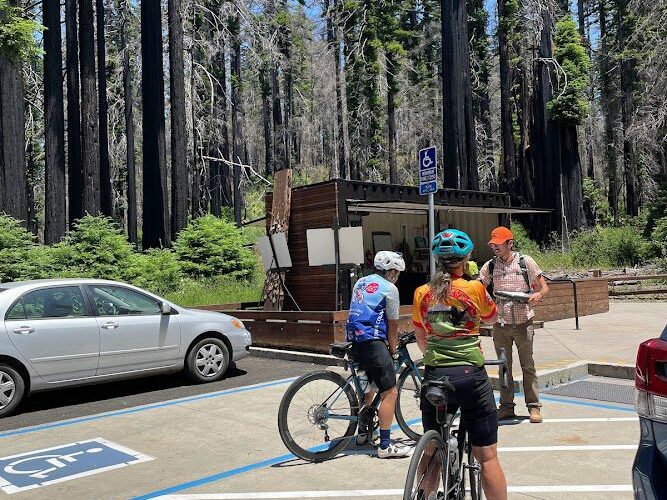
Parks California: How did you get involved in the visitor use management study?
Donovan Belardes: One of my professors sent it to me and I thought it’d be a good opportunity to try out. I wasn’t particularly sure about what the study was going to be until I got into it. I’m majoring in park management, so I figured it’d be a great place to put my foot in and see how park processes — especially around park planning — are done.
Conner Wanless: I’m a recent graduate of the West Valley College Park Management program and was in the program when one of my instructors told me about it. She mentioned that there may be an opportunity to work at Big Basin, which is a park I’ve always wanted to work at. I wasn’t exactly sure what “visitor use management” necessarily meant.
Parks California: So, both of you came into this not knowing what “visitor use management” means. How would you describe it now?
Donovan: That’s a good question. Now that I’ve finished the internship, I’d say it’s taking the experience from visitors who are using the park and using those experiences through surveys and other forms of data collection, to plan how to better manage the park for both the forest (in the case of Big Basin) and to provide a better experience for visitors, as well.
Conner: I had a stronger understanding of what visitor use management meant when I read a pamphlet (Interagency Visitor Use Management Council). And I get that it can encompass more than monitoring soil compaction on social trails. This (visitor use management project) is definitely more about the whole reimagining process. It’s learning how visitors want to use the park, what they want to do at the park, and balancing that with preserving the forest. This data will help park staff manage Big Basin for the future in the long term, both in relation to visitors and the park as a natural resource.
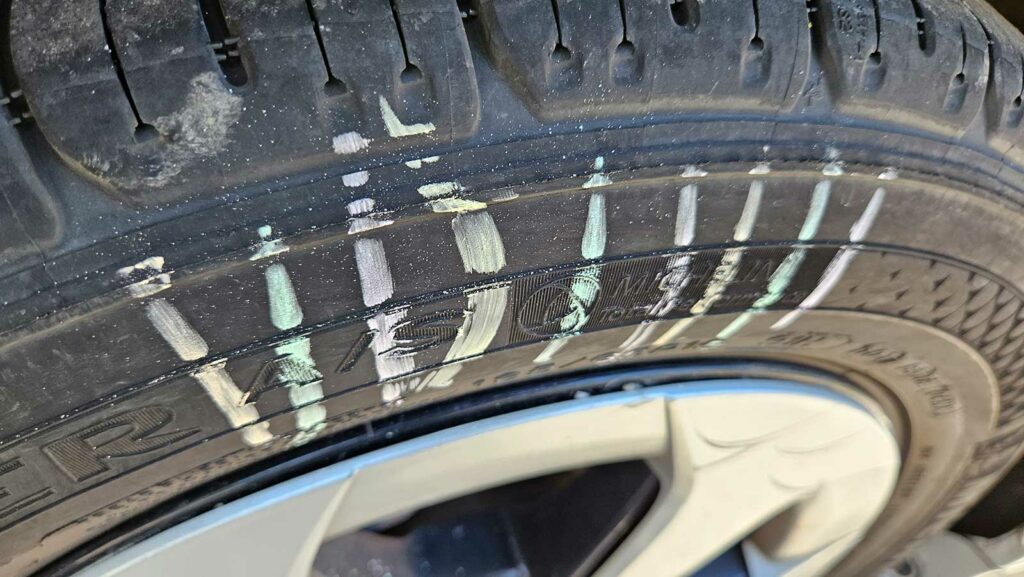
Parks California: How did you explain the work that you were doing to others, like friends or family, who were also not familiar with “visitor use management”?
Donovan: A lot of my family had previously been to Big Basin before the fire. And they were honestly very interested in learning how the reimagining process was going. And they’re actually pretty excited to see that I was going to be helping in the overall process of figuring out how the park could be rebuilt in a more beneficial way for the ecosystem.
Conner: I told people I was assisting and collecting data that could potentially be used for various things with the reimagining process and to help the park. But I would also talk with friends and family about the experiences that I had while I was surveying.
I met people who had been camping at Big Basin every year for the past 50 years. They would just open up to us, telling us stories about the memories they made there. And they’d say, “oh yeah, that used to be over there. There used to be this here. We used to do this.” I learned a lot from people who love Big Basin.
Parks California: Is there a story that someone shared with you or a moment that you’d want to preserve forever in your memory?
Donovan: For me, one time, there was an older woman who had come up to me, and she was in tears. And at first, I was pretty concerned that something had happened. Maybe stung by a wasp or something. But she told me how she had been avoiding coming back to the park (after the fire) because she was just so worried about how devastated she would feel having previously had a bunch of memories at the park. And she was in tears, both because she was sad to see all the structures and facilities gone, and to see the burn scars. But at the same time, she was also kind of having tears of joy to see that all the basal sprouts were sprouting, seeing the forest really come back to life and learning that there’s a lot of work going on to rebuild some of the facilities at the park. It may not be the same that it was before. But to be able to provide those experiences for future generations, was a relief. She had been very concerned that no one would be able to experience Big Basin as she did.
Conner: There are a lot of examples of visitors having this first initial feeling of loss followed by an excitement, seeing everything regrow, which is super unique to a redwood forest. Not to get too much into fire ecology, but a pine forest will stay burned for a long time; it takes longer to regenerate. People who may have experienced that in past wildfires think all trees are just going to be piles of ash or fallen over. But redwood forests regenerate incredibly fast [compared to pine forests] and are incredibly resilient to fire, which a lot of other conifer species aren’t. So, I think it is exciting for Big Basin visitors when they see all the new green at the park.
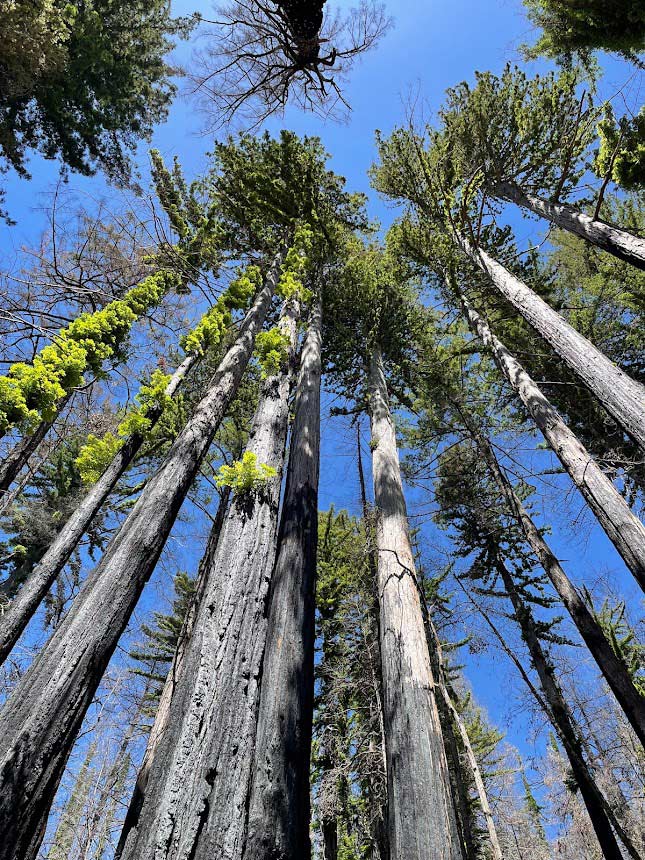
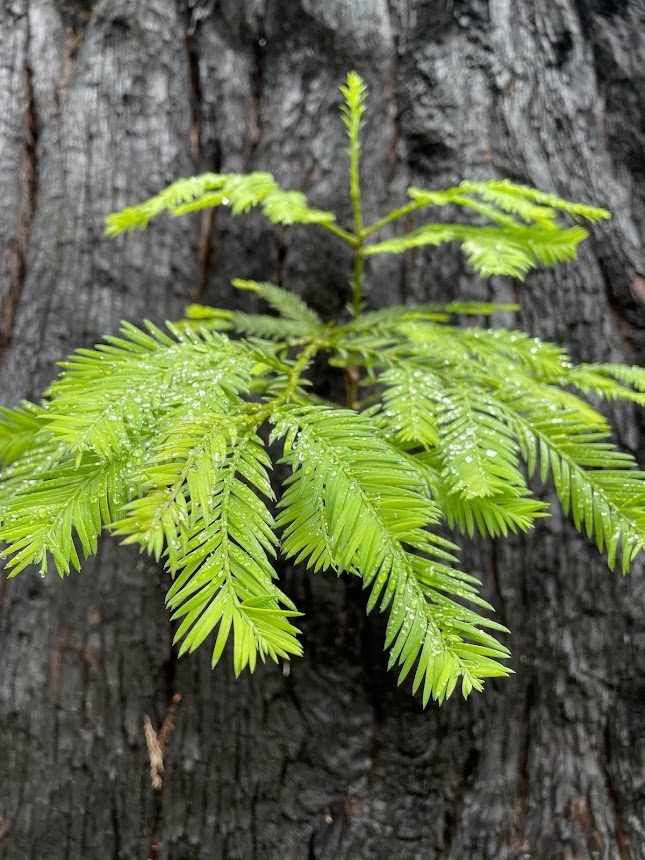
Parks California: What are people seeing now when it comes to Big Basin’s redwood forest recovery process? (Editor’s Note: this interview took place in September 2023.)
Conner: I mean, we’re at year three since the fire, and some of the trees have already grown back a good part of their canopy. Redwoods do this thing called basal sprouting, which is where little tiny trees sprout up around the base. Some of the basal sprouts are already 12 to 15 feet tall. They’re already small little trees. And a lot of other plant species don’t do that.
Parks California: I’ve heard both of you sort of fashion yourself as plant nerds — is that true?
Donovan: 100% for me.
Conner: I wouldn’t say I’m as into them as Donovan. I’m super into redwoods specifically. But I do like plants and the outdoors. I’m a little nerdy when it comes to that.

Parks California: Donovan, what does it mean to be a plant nerd?
Donovan: Whenever I’m going on hikes and going out in nature, my mind is constantly going about all the different plants around me. I’d been involved with gardening with my grandma since I was a little kid so I’ve always had a love for plants. But once I graduated high school and entered community college, it just kind of exploded. And it’s one of the areas where I’m constantly hungry for more information. It’s just one of my passions.
Parks California: Awesome. What about you, Conner? Where did this interest in redwoods start?
Conner: I think the root of it is the camping trips I went on when I was a kid. We would go camping every summer. And then eventually when I got older, I got into hiking and started doing it more and more. I got the bug because I was outside all the time. Later, I moved up to Boulder Creek and lived in the redwoods, which is where I started learning about them. They’re super unique with incredible abilities that other plants don’t have. In a sense, they’re immortal — they can regenerate and clone, and not even just one way. As I went deeper down a rabbit hole, I got into old growth forest ecology and it kind of just snowballed. But the root of it was camping trips as a kid and having that connection to the outdoors.
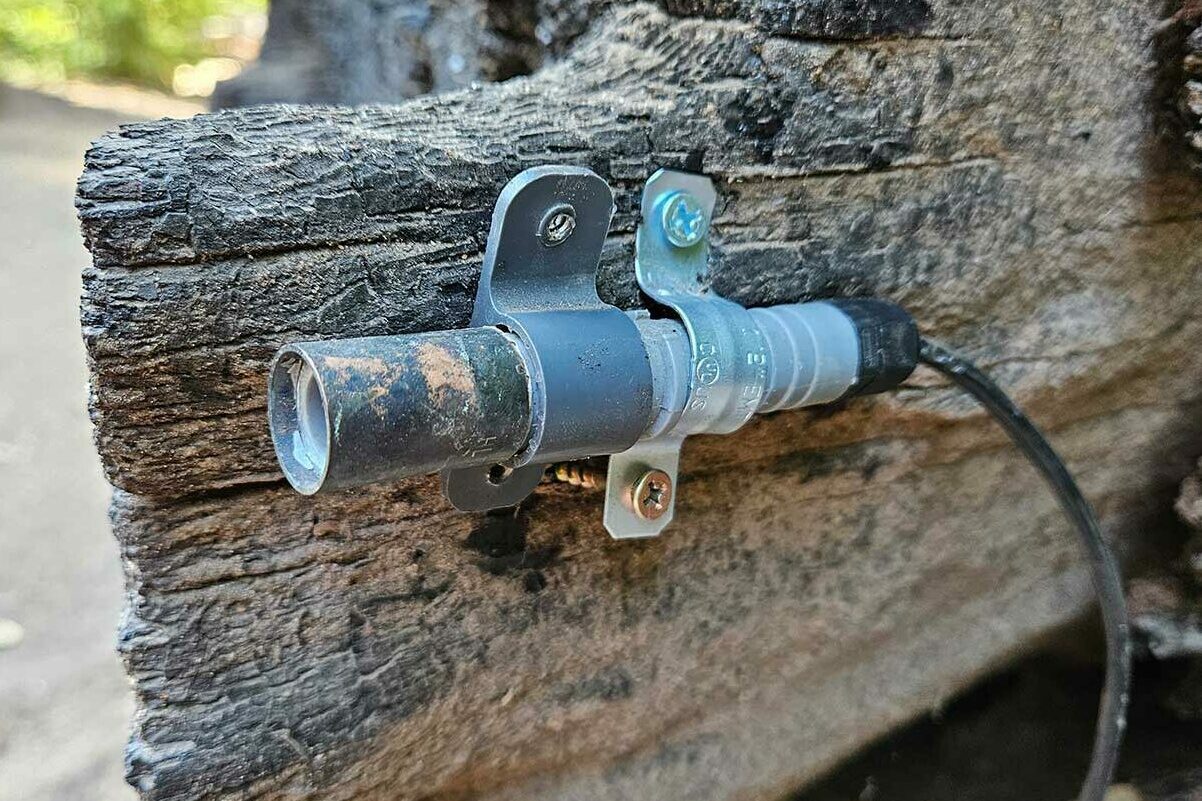
Photos: Conner Wanless
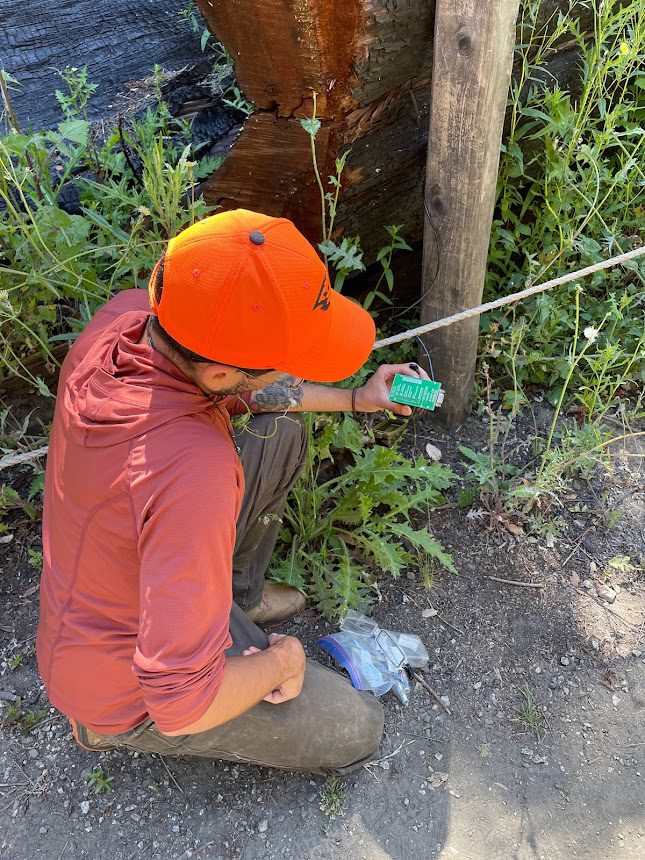
Parks California: Both of you majored in park management. What is the plan for after graduation?
Conner: I’m a recent graduate from West Valley and got accepted to Oregon State University, in their natural resources program. The plan is to work while chipping away at school online. Hopefully in a couple of years, I’ll get that next degree, a bachelors in natural resources. The ultimate goal would be a career in the management side of natural resource management, working in a true management sense, like forestry management or conservation planning. I’m really trying to work on the large picture because I’m interested in systems and how everything’s connected.
Donovan: I’m actually just starting the program at West Valley. When I originally started the internship, I didn’t have very much of an idea of what I wanted to do. But being able to work with Conner, who had already been through the whole program, was a pretty unique experience. And I’ve been able to understand a little bit more before even taking some of the classes about the different roles in parks. And Conner definitely got my interest when he told me about natural resources, but I’m keeping it open. I do have a lot of interest in the parks and want to be able to provide experiences that I had as a kid to other people.
Parks California: Any reflections on what you’ve learned about yourself through this internship?
Donovan: For me, I learned how insightful it was to have had these interactions with visitors and to listen to their personal connections to the park and the land. That honestly, happened almost every day – someone sharing personal memories that they have with their family or growing up. Some of them were pretty profound. That was probably one of the things that made me look at myself, and see how I interact with local parks around me, too. I thought about the parks I’ve known since I was a kid and wondered how I’d feel if they were just gone one day, how that would affect me. Talking with people who experienced this disaster first hand was both sad but also a very good opportunity to look at how these climate change-led events could impact livelihoods.
Conner: I resonate with what Donovan said about hearing people’s experiences, especially from people who are visiting for the first time since the fire. I live locally and had been evacuated by the fire. I used to come to Big Basin pretty frequently. It’s one of my favorite parks — 15 minutes down the road, and very easy to go to for a day hike. And I was actually one of those people who put off visiting after the fire because I didn’t know what to expect. But after working there all summer and seeing how fast it’s growing back, now I know that park like the back of my hand. Now I know where certain animals like to hang out, I know where they live, I know what times of day to see the banana slugs and the best place to see them. I mean, it’s a thriving forest. And the trees are still there, still growing. It’s still an amazing place to visit even though it’s definitely changed.
And on top of that, it was great getting to know everyone who worked at the park, especially the docents because we spent a lot of time talking in the parking lot doing surveys. We’d have a couple of minutes here and there to speak with them, and they had so many stories. It was absolutely incredible.
I have an even stronger appreciation and attachment to the park through this opportunity. It was also just really fun working with Donovan throughout the summer.
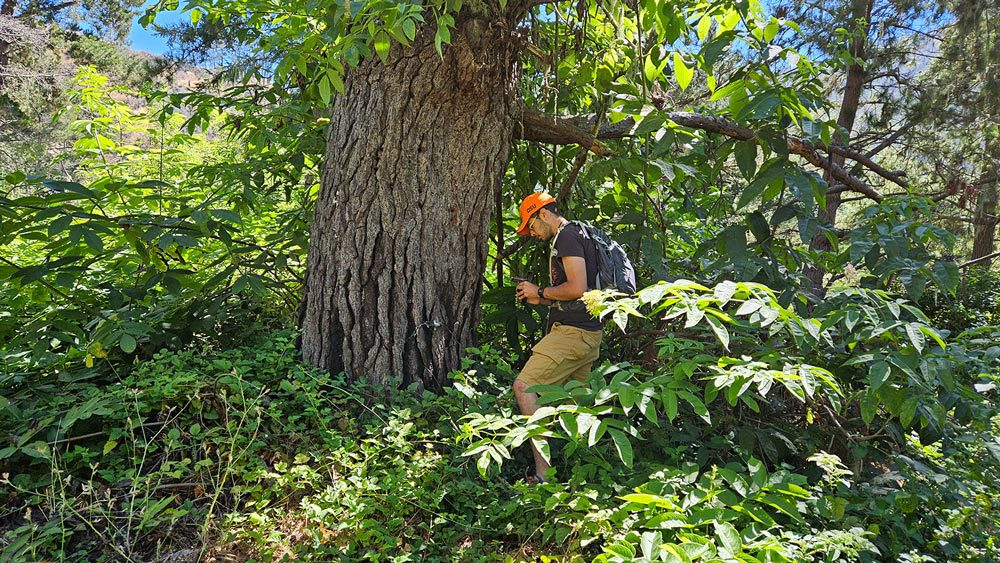
Donovan: Yeah, Conner was definitely a good person to work with. We have a lot of similar interests. It was definitely a great summer and great working with him.
Parks California: Was there a skill that you learned or refined during this process that will be applicable for your career going forward? And any parting words?
Donovan: For me, it was definitely public communications. It was a little daunting, at first, to go up to groups of people and ask them if they want to take the survey.
Conner: I have tons of customer service experience. However, the surveying definitely brought in a new perspective of communicating with the public. In a customer service role, people come to you. But as a surveyor, you’re kind of interrupting their day, you’re flagging them down. A lot of people were surprisingly open to doing the survey, but it definitely helped improve my communication skills.
And one other thing I was excited for, even though it’s not the most exciting thing, is data management. In this job, we digitized all the surveys. We kept track of a lot of data; we had to keep it organized and make sure everything was input correctly. A lot of jobs in the field I’m looking at require some data management experience so, for me, the data management aspect was a skill set that I definitely wanted to build upon.
Donovan: I just really appreciate the opportunity from Parks California to be able to work in this interagency project. Not only just gaining the experience, but more than that, it just felt good in my heart.


